
Jeep Compass review

Introduction
Once a reputable manufacturer of all-terrain vehicles, Jeep has seemed to be in the doldrums of late, certainly in the United Kingdom.
You don't see many on the UK's roads nowadays, and it is a brand that’s been risking living in the past with long-lived dated designs and not much new to offer. And, when it does have something fresh to deliver, the vehicles that have rolled off the production line have been a bit ‘meh’ and rather too run-of-the-mill.
But all that is starting to change, thanks to the rather striking and bullying looks of the Jeep Compass.
Select's rating score* - 2.9 / 5
At a Glance
While it retains its unmistakable Jeep-ish looks, this one appears as though it’s been to the gym. The tame aesthetics are long gone and have been replaced by new and far more aggressive styling, especially at the front.
The ‘n’-shaped bodywork divides the lower grille into two sections, making all the difference. It looks meaty, sporty and makes you feel as though you wouldn’t want to mess with it if it glared at you the wrong way in the pub. The main upper grille retains seven horizontal rounded squares, which are silver-edged. These are flanked either side by two headlights which appear to bend upwards slightly at the top, creating a clear frowning monster. The less-friendlier look suits the Compass.
From the sides, there are horizontal creases along the doors – one running straight through the centre of the door handles, and the other about halfway down towards the floor. There are more creases right at the bottom. These extend outwards to add definition to the wheel arches and accentuate its off-roading capabilities, while a thick side skirt also adds to the muscular looks.
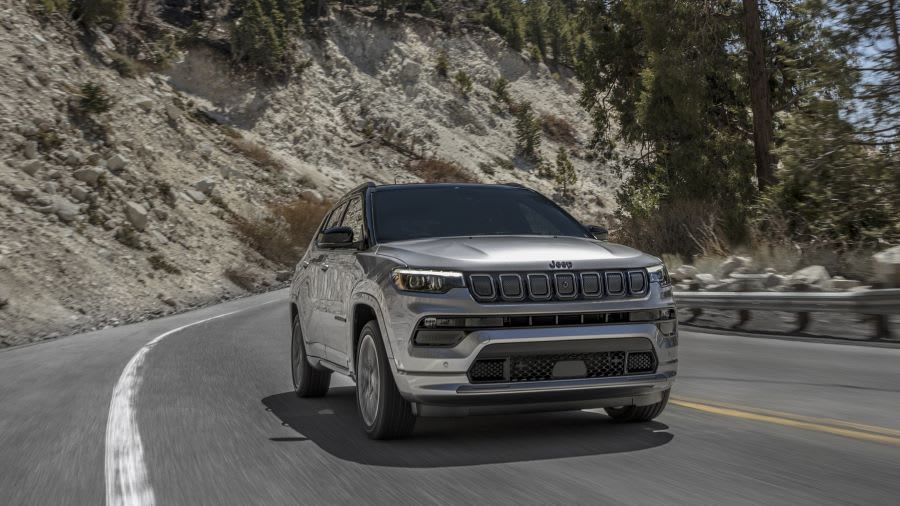
The rear, by comparison, looks a little tame, but comprises styled taillights and dual exhausts lower down towards the bottom. We wish the designers had spent as much time at the back as at the front, but the latest Compass is still not ugly.
On the other hand, the front is the most important. So, if you’re after a family SUV that will satisfy the eyes, then this could be it.
Overall, it retains a boxy, SUV-style appearance, with various rugged features that make it look perfectly adept at off-roading.
Key Features
There is only one fossil-fuelled engine now – a 1.3-litre four-cylinder petrol engine with a six-speed manual gearbox that produces 130PS.
Alternatively, if you pick the 4xe (pronounced ‘four-by-ee’, as in ‘four-by-four’) plug-in hybrid version, you’ll get a six-speed automatic gearbox. Although you get the same 1.3-litre engine, it’s uprated to around 180PS and, when united with an electric motor, the total power output raises to 240PS. That’s 110 horses more than you get in the petrol.
There are no diesels available, so those who want a high miles-per-gallon figure will be pointed more towards the hybrid.
Both the PHEV and petrol versions each come with two trims.
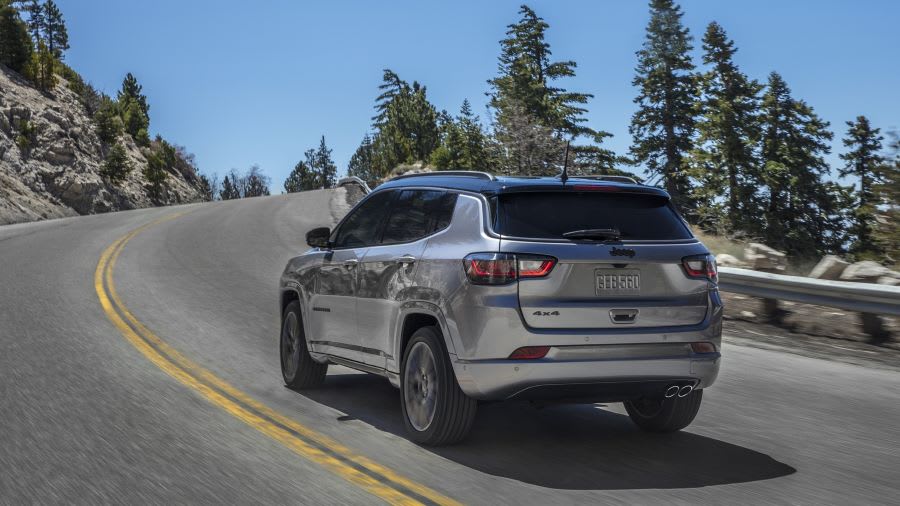
The petrol starts off with Night Eagle trim. This grade features 18-inch gloss black alloys, blacked-out bodywork, a 10.1-inch Uconnect touchscreen (but no SatNav), a rear-view camera, front and rear parking sensors and LED headlights.
Limited trim includes 18-inch diamond-cut alloys and adds adaptive cruise control with automatic braking and stopping ability. A wireless phone charger is also part of the package.
The plug-in hybrid variants start off with Trailhawk trim. This features 17-inch off-road alloy wheels with mud and snow tyres. It also houses the 10.1-inch Uconnect touchscreen (with SatNav), cloth and vinyl seats with ruby red stitching and Selec Terrain with rock mode (a rotary dial used to set the car up for off-roading).
Alternatively, ‘S’ trim upgrades the alloys to satin grey 19-inch rims, provides an eight-way electric driver’s seat and a powered tailgate.
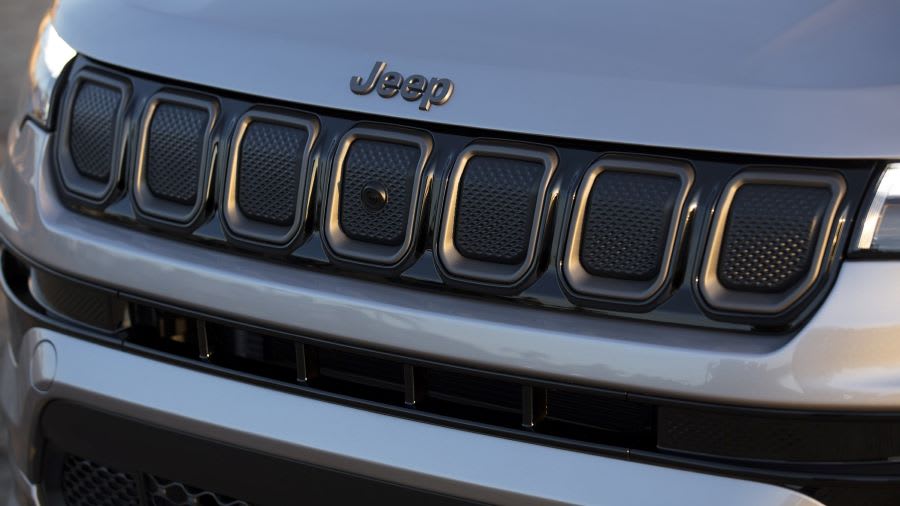
Range & Batteries
The plug-in hybrid version comes with an 11.4kWh battery. And, despite the vastly increased power, it will send the fuel economy miles-per-gallon well into three figures.
It will also manage around 30 miles of all-electric range, as long as you keep the batteries topped up.
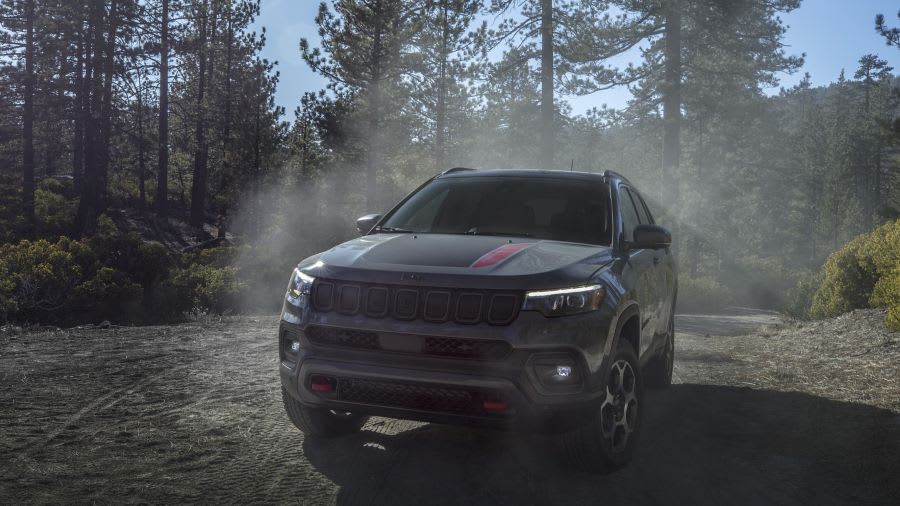
Performance & Drive
The 4xe plug-in hybrid has a zero to 62mph time of 7.5-seconds. The six-speed automatic changes smoothly, but it doesn’t pick up the Jeep’s acceleration that quickly. As a result, the performance feels a little restrained.
There is no real sense that the electric motor is gathering up any of the slack. As a result, the Jeep doesn't feel especially quick, even though the performance figures are pretty reasonable.
You need to rev the Compass quite aggressively to get any performance. But that creates noise and, of course, being an automatic, usually results in a gear change.
The manual box is better, but then you’re stuck with the less powerful non-hybrid 1.3-litre engine, where the performance just isn’t up to the job. Well, that’s unless you’re likely to use it at low speeds around town or in rush-hour traffic, where it feels well suited.
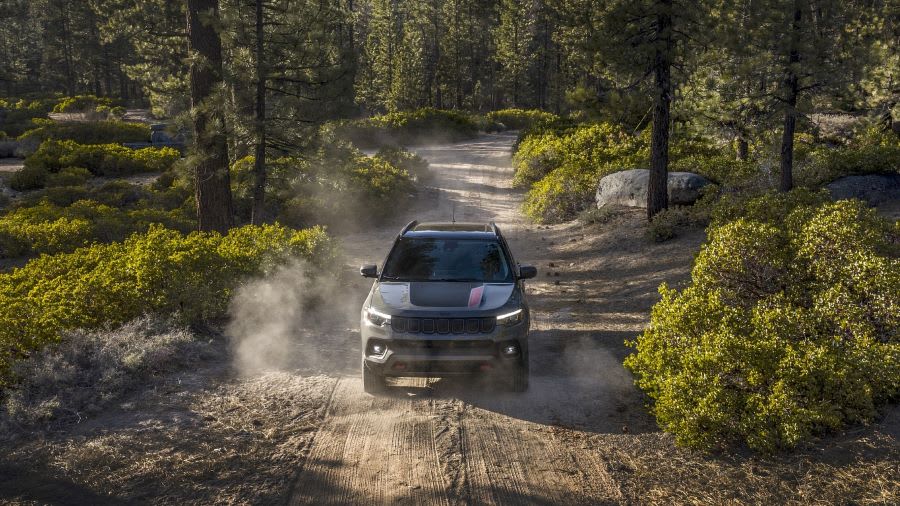
The Jeep Compass is more at home as a cruiser. It feels more refined, settled and, therefore, comfortable. The ride is relatively firm, although this can be improved by choosing smaller alloys. Nevertheless, it tends to 'crash' into potholes rather than ride smoothly over them. It is especially noticeable at lower speeds, where it can feel a little twitchy, although it’s less noticeable on motorways.
Around town, the steering is light, but there's not very much feel from it, and the feedback is limited. Therefore, heading around corners isn't especially exciting when you get up to speed. But then no Jeep is built for its sports-like handling, and, in fairness, the body roll is limited, so there’s not much lean in the bends. This means it feels well planted and stable when the going gets twisty at speed.
Speaking of higher speeds, there’s more road noise than you get from rivals. The Compass is hardly deafening, but other manufacturers have done more with soundproofing.
The Jeep Compass excels at off-roading, though. In the hybrid, the electric motor comes into its element, helping the traction on the rough stuff and finding grip where others would falter. In Trailhawk trim, you also get raised suspension, and the special tyres are better suited to off-roading.
In fact, the drawbacks on the road made the Compass hard to make a case for – until we hit the rough stuff.
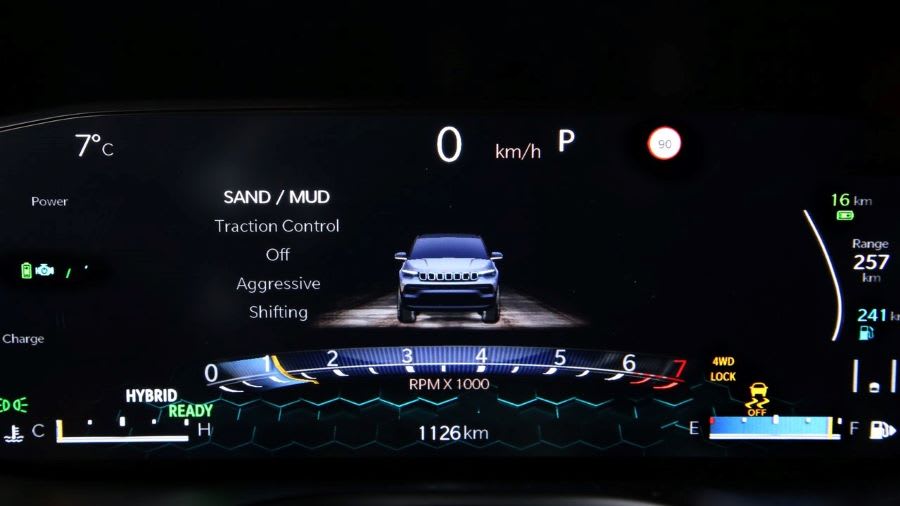
Charging
The Compass, in 4xe plug-in hybrid guise, will need topping up to get the most from the fuel economy.
You can charge it up from a 7kW wall box at home in under three hours, too.
Read more on EV charging, here!
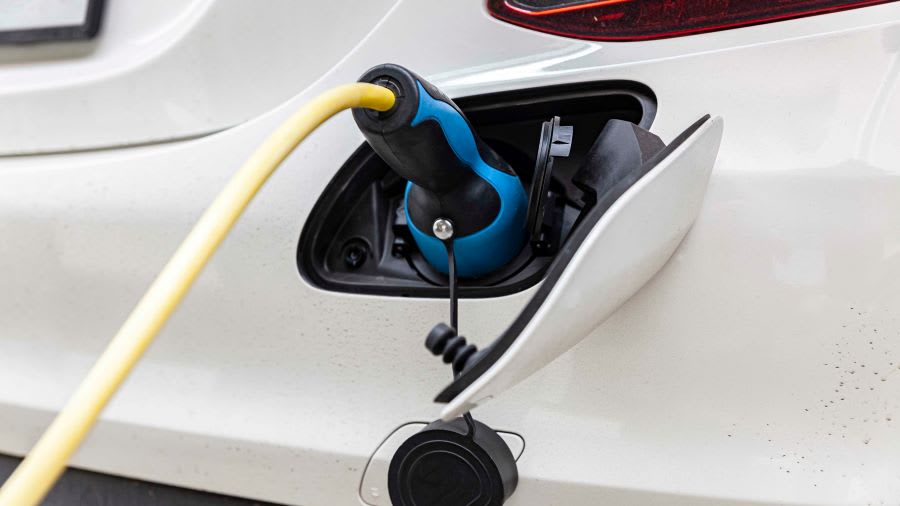
Running Costs & Emissions
The 1.3-litre petrol engine manages a combined 40.9mpg, producing 157g/km of CO2.
If you keep it charged up, the 4xe plug-in hybrid will manage up to 157mpg. At the same time, its low emissions of 47g/km of CO2 make it especially attractive for company car users.
If you’re on a tight budget, you’ll be better off with the petrol model as it’s cheaper than the 4xe. In addition, the 130PS engine feels nippy enough around town and will return around 40mpg.
Servicing costs are generally lower than average, too. And while Jeep isn’t a manufacturer historically renowned for its reliability, it has worked very hard on this aspect in recent years. Therefore, the Compass has scored impressively well in customer satisfaction surveys.
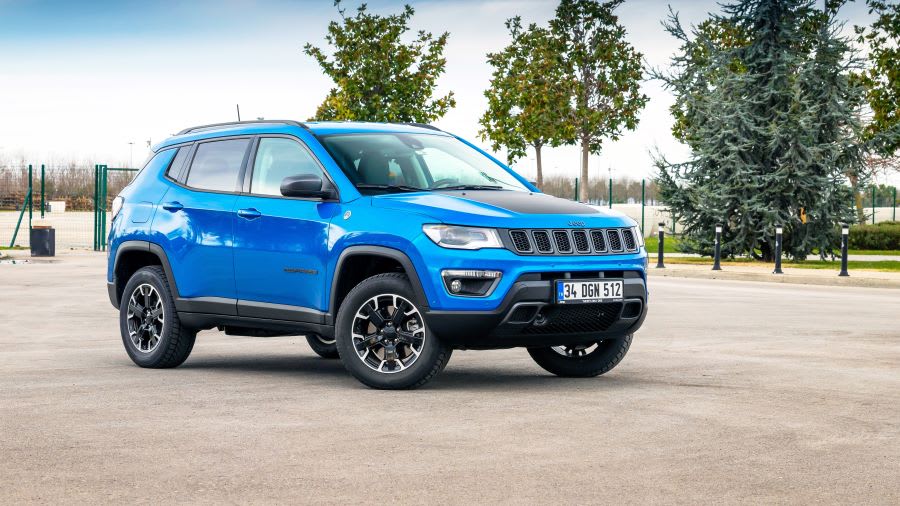
Interior & Technology
It has been a long while since Jeeps had utilitarian interiors. But, in truth, the automaker has never quite cut the mustard on the inside.
Certainly, the Compass’s cabin wasn’t up to the job before - it looked like it belonged in a small budget hatchback. But Jeep has overhauled the Compass’s interior, making a big step forward on its predecessor.
Dashes of silver break up what was a very dull-looking finish before. Furthermore, the steering wheel now looks like it befits a powerful off-roader with many buttons within reach of your fingertips.
The SUV’s infotainment screen sprouts up from the dashboard like a tablet. Moreover, despite upgraded software, the air conditioning controls remain physical and separate, which is a big plus.
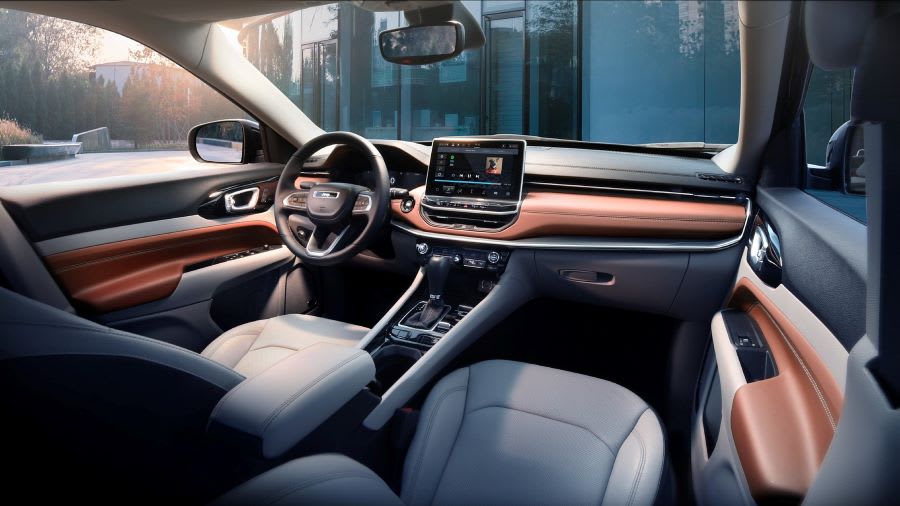
The Uconnect infotainment system is a new version. If your trim includes the satellite navigation, it’s pretty good – not something Jeep has been renowned for previously. A voice assistant can be summoned to search for nearby restaurants, petrol stations and other landmarks. What’s more, you can get wireless smartphone mirroring with both Apple CarPlay and Android Auto.
Those with the plug-in hybrid version can also push a button to ensure the battery is saved for when it’s needed. Examples for when this will come in useful include driving into a low emissions zone, or off-roading, which is made far easier by the presence of the electric motor.
There is a high, commanding driving position - and large mirrors make reversing a simple job. This is helped by the reversing camera and parking sensors, despite the enormity of the Compass’ rear pillars.
Competitors still have better interiors, but this is a considerable improvement from Jeep on what came before. It still isn’t overly luxurious, though.
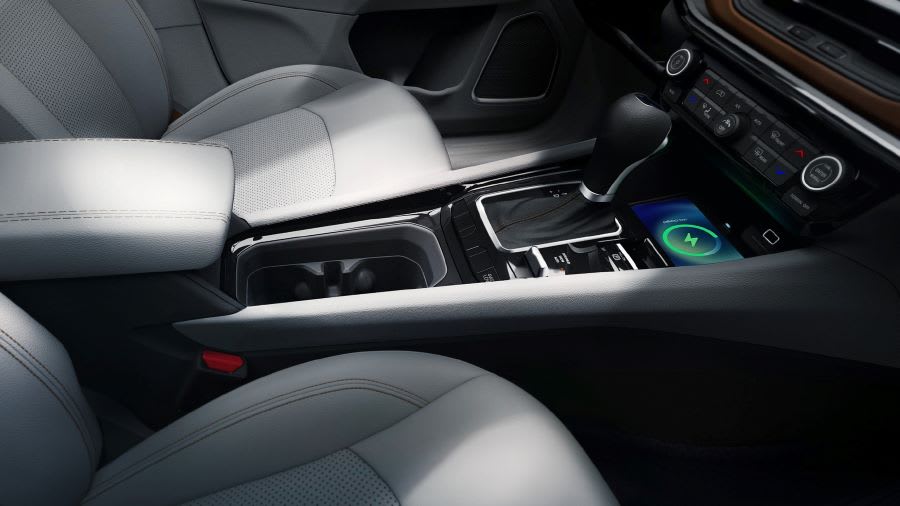
Practicality & Boot Space
There are many more places to store things in the Jeep Compass now. Indeed, a lack of storage space was a key criticism of the old Compass, so it’s good to see that Jeep has listened and taken the feedback on board.
The front door bins are generously sized, while there’s a tray in the dashboard, just in front of the gear lever, to put your phone. This is also where you’ll find the wireless phone charger in some trims.
The storage in the centre console is more extensive, too, but it still isn’t enormous. A medium-sized glove compartment also provides a bit more capacity for tidying bits and bobs away.
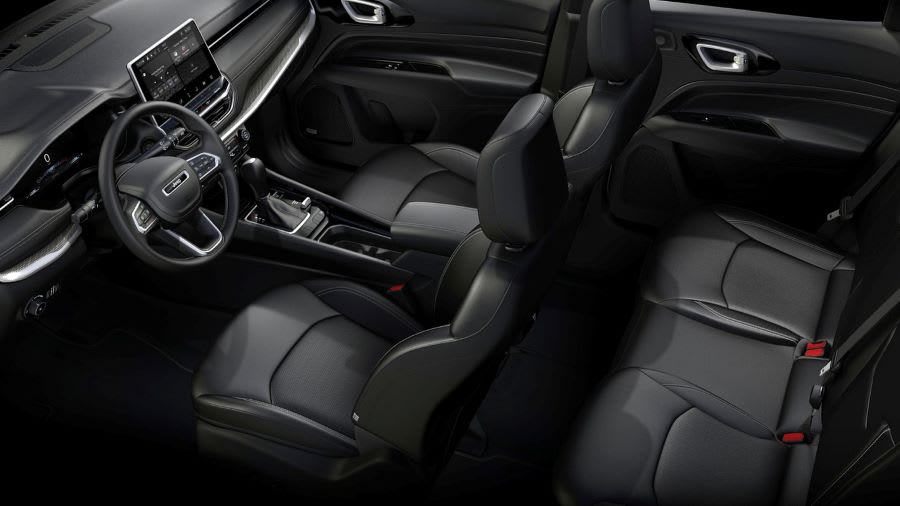
The front seats are comfortable, and lumbar support is included as standard. There is plenty of room to move about and find a relaxed driving position, too. Mind you; taller drivers will find themselves compromising the space of anyone in the rear by needing to move the seat back.
If that’s not an issue, then there’ll be a decent amount of room in the back for two adults, although three is a struggle. The legroom on offer is less than we had expected, and most rivals offer more space. Headroom is plentiful, though, and there's lots of room to move your shoulders about without feeling hemmed in. That said, children might be disappointed at the limited view as the Compass’ rear windows are small.
You get some smaller door bins in the back and pockets in the rear of the front seats to store papers, magazines, or maybe a tablet. A couple of cupholders also pull out of the centre armrest in the middle seat.
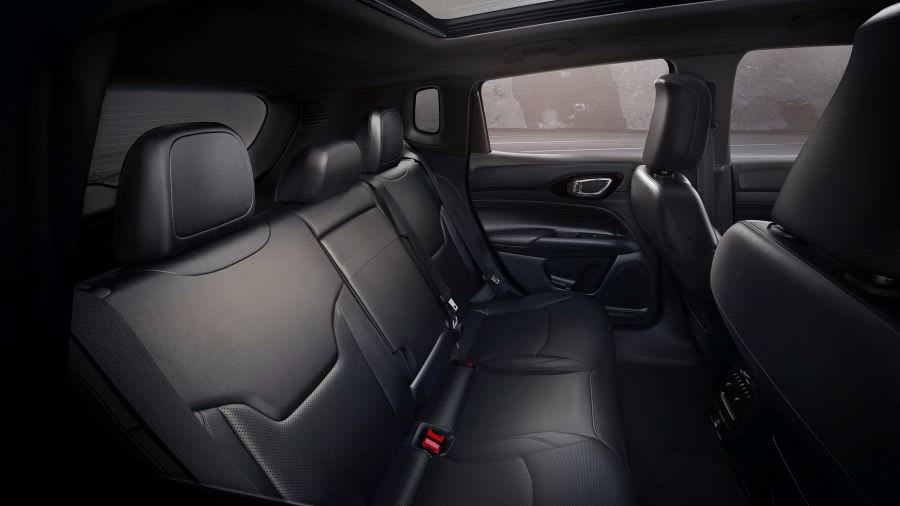
The boot capacity is 438-litres in both the petrol-engined version and the hybrid, with the latter not needing to sacrifice any space to accommodate the batteries. Other challengers have bigger boots, but the Compass’ should be enough to meet the needs of just about everyone.
There is no load lip, which makes it easier to lift heavy or bulky items in and out of the boot, plus you get a powered tailgate on the top trim.
The rear seats can be folded completely flat, expanding the capacity to 1,251-litres. And there’s more storage space beneath the boot, which is where you keep the charging cables in the hybrid.
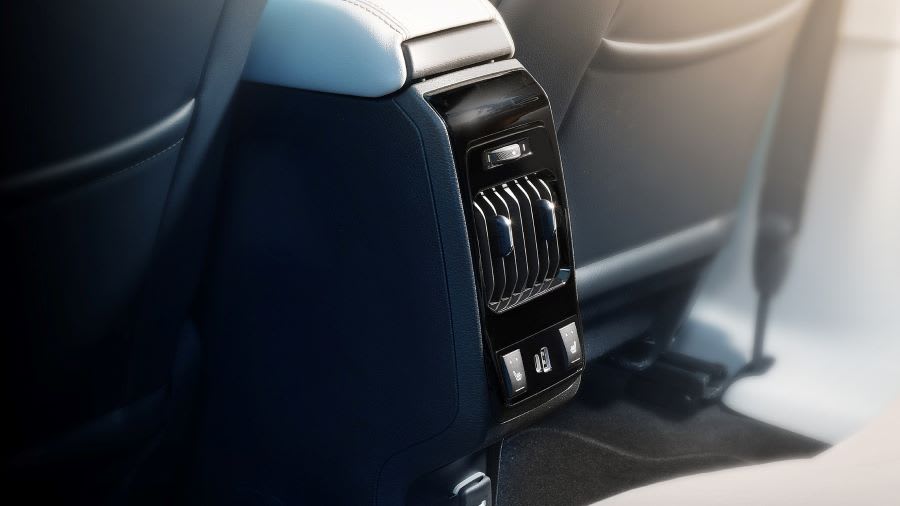
Safety
The Jeep Compass was last tested by Euro NCAP in 2017 and did well, earning a five-star rating.
It also scored 90 per cent for adults occupants, 83 per cent for children, but only 64 per cent for pedestrians and a disappointing 59 per cent for safety assists.
Nevertheless, much has changed since then. So, it’s reasonable to think that the Compass would do better today. Mind you; it should be noted that Euro NCAP made its tests more stringent in 2020.
You get front collision warning if it detects an obstacle in the road ahead. Plus, lane keep assist will stop you from veering out of your lane on a dual-carriageway or motorway.
The Jeep Compass feels solid and well built. In fact, it uses the same platform as a Fiat 500X – which gives you confidence that it’ll offer a great deal of protection in the event of a collision.
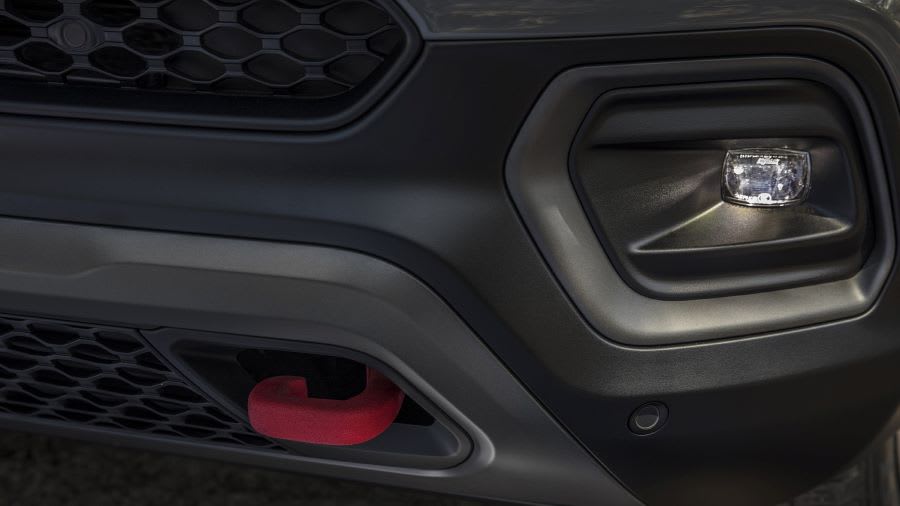
Options
There are several things you can customise to your heart's content.
Solid black paint is included as standard, but anything else, such as metallic or bi-colour paint, costs more.
Some trims will allow you to choose different wheels. For example, with the Limited trim, you can upgrade the 18-inch alloys to 19-inches for an extra cost.
Various packs can be added, too. For example, Park Pack Plus will add courtesy lamps to the door mirrors, a 360-degree camera and park assist.
You can also have the Infotainment Plus Pack, which includes the SatNav and traffic sign recognition. Curiously, the infotainment upgrade also encompasses the powered tailgate.
The Power Pack throws in the wireless phone charger and adds USB ports in the back of the Compass. Meanwhile, there are various other packs available on other trims, most of which will add items that are included as standard higher up the range.
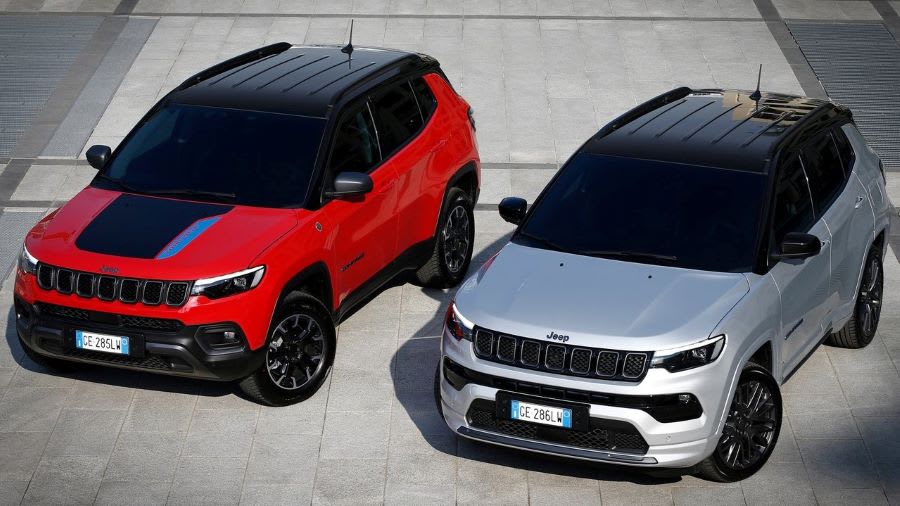
Rival Cars
There is no shortage of alternatives in the compact crossover SUV segment.
One of the most common rivals is likely to be the Nissan Qashqai, but the Jeep Compass has a bigger boot.
Volkswagen’s Tiguan and Skoda’s Karoq offer better build quality, nicer interiors, and more space – although the VW is more expensive.
Peugeot's 3008, on the other hand, has good looks, better drivability, and practicality, too. But it’s also the most expensive of the lot at entry-level.
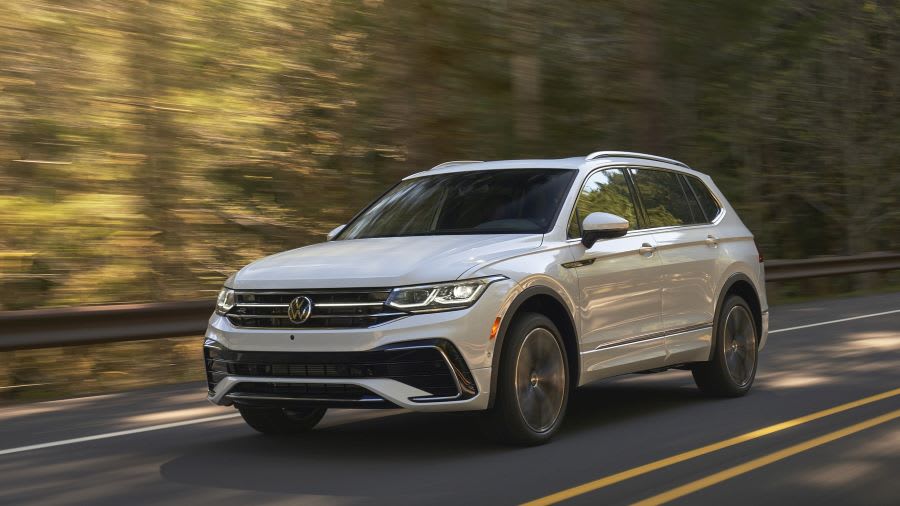
Verdict & Next Steps
Overall, the Jeep Compass is getting better and better, but the drawbacks still risk making it unviable for some motorists.
The cost of going for the plug-in hybrid version outright adds around a third to the price, making it much more expensive than the petrol. However, that’s not an issue exclusive to Jeep by any means.
If you choose the petrol version to save money upfront, you won’t get SatNav, which is disappointing (although you can add it as an optional extra). Furthermore, the engine isn’t really up to the job, unless most of your driving is going to be done below 40mph.
The space in the back of the Compass is restrictive, which rather defeats the point of having an SUV. Additionally, other rivals are more pleasant and less tiring to sit in on longer journeys.
On the plus side, the Compass’ styling is a big step forward; it's a very capable off-roader, and it comes well-equipped with lots of safety gadgetry.
Really, the latest Jeep Compass makes the most sense if you’re a company car driver who wants the hybrid – and wants to drive it off-road a lot.
For now, we can't imagine that's going to be a vast number of people.
Where to next?
View latest Jeep Compass Leasing Deals - from just £445.81 per month inc VAT**
Looking for a great leasing deal? Check out our incredible range of Special Offers
New SUV? Read our latest Car Reviews and find the right model for you
Want to know more about leasing? Take a look at our comprehensive Leasing Guides
Interested in everything motoring? Why not catch up on all the latest Car Leasing News.
**Score based on Select’s unique meta score analysis, taking into account the UK’s top five leading independent car website reviews of the Jeep Compass
**Correct as of 09/02/2022. Based on 9 months initial payment, 5,000 miles over a 48 month lease. Initial payment equivalent to 9 monthly payments or £4,012.29 Ts and Cs apply. Credit is subject to status.

.jpg)



















